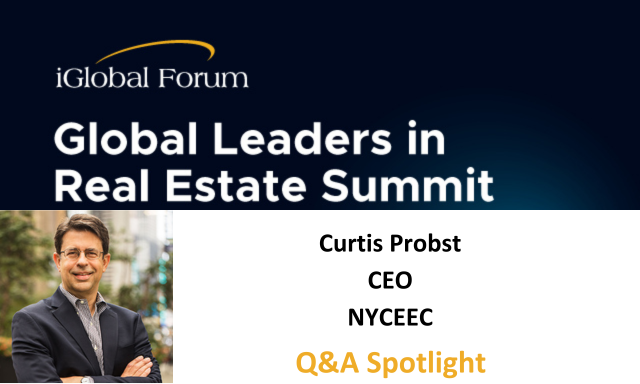We sat down with Curtis Probst, CEO of NYCEEC, to explore key issues like sustainable lending strategies, environmental responsibility, and more. Read on for insights on these topics and more.
Q. Given the current green building boom fueled by the Inflation Reduction Act, what opportunities do you see for lenders and developers in adopting sustainable lending strategies and utilizing C-PACE financing to enhance sustainability and profitability?
The Inflation Reduction Act, as well as state and local mandates (e.g., Local Law 97 in New York City), are indeed generating increased interest in green buildings. The Inflation Reduction Act supports sustainable investing in many ways. One way is through the Greenhouse Gas Reduction Fund (GGRF), which provides capital for making buildings greener, among other things. As a key goal of the GGRF is mobilizing private sector capital, there should be many opportunities for private sector lenders to collaborate with organizations receiving and deploying GGRF capital.
Q. How can lenders strike a balance between achieving strong financial returns and environmental responsibility, particularly in attracting eco-conscious tenants and maximizing returns through energy-efficient projects?
The balance will differ by market and building type, but there should be many opportunities for lenders and investors to identify environmentally responsible projects that also lower building expenses, support higher rents or sales prices, and/or reduce vacancy rates by attracting new tenants. Timing these projects to coincide with other capital infusions at the building or with tenant changes is likely to reduce the incremental time, effort, and expense associated with these projects.
Q. With NYC's zoning revolution and new incentives aligning with sustainability goals, what strategies should lenders and developers employ to integrate sustainable lending seamlessly into their portfolios while ensuring compliance and maximizing returns?
Unfortunately, there are no “one size fits all” strategies that lenders or developers should pursue. Strategies will vary depending on the building and its tenants, the specific market segment, and the building condition. Fortunately, we are seeing increased coordination among NYC agencies to support strong economic and environmental outcomes.
Q. Why Speak at iGlobal Forum? What unique insights and experiences will you be sharing at iGlobal Forum's event on October 15, 2024, in New York, and what makes this event significant for you?
This event gathers many industry leaders and provides both educational and networking opportunities that support the kinds of complex, multi-stakeholder initiatives that are needed for successful transactions in this challenging market environment.
Curtis will join us at the event for a panel discussion on "From Wild West To Established Alpha - How To Succeed In Today’s Competitive & Diversified Market,” together with fellow panelists Drew Brantley (Frisch Capital Partners), Nick Russell (Tuckerman Capital), Rob Bauer (Bassett Creek Capital) and Paul Marino (Sadis & Goldberg), as well as moderator Claudine Cohen (CohnReznick). They’ll discuss what the next 12 months will hold for the middle market, and deep dive into credit markets, geopolitics, and emerging trends, and how they impact your portfolio and investment processes. Register now to explore key issues like sustainable lending strategies, environmental responsibility, and more.
.png?width=600&height=150&name=logo%20(6).png)






